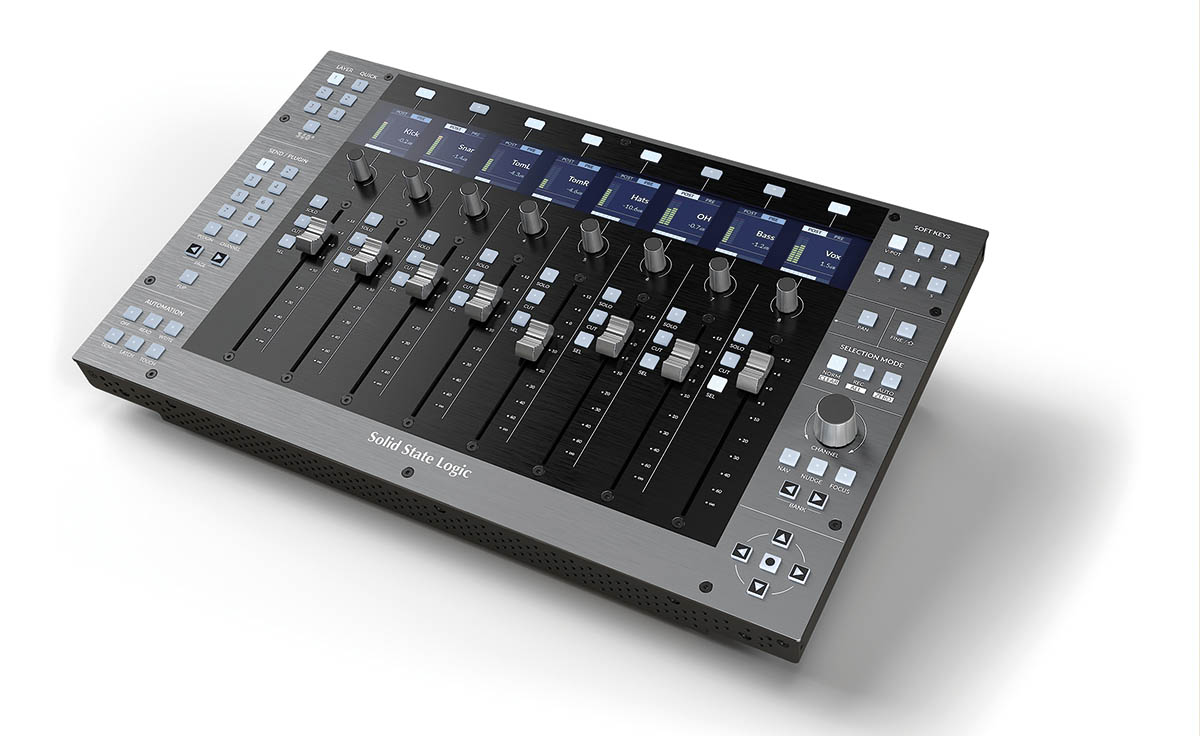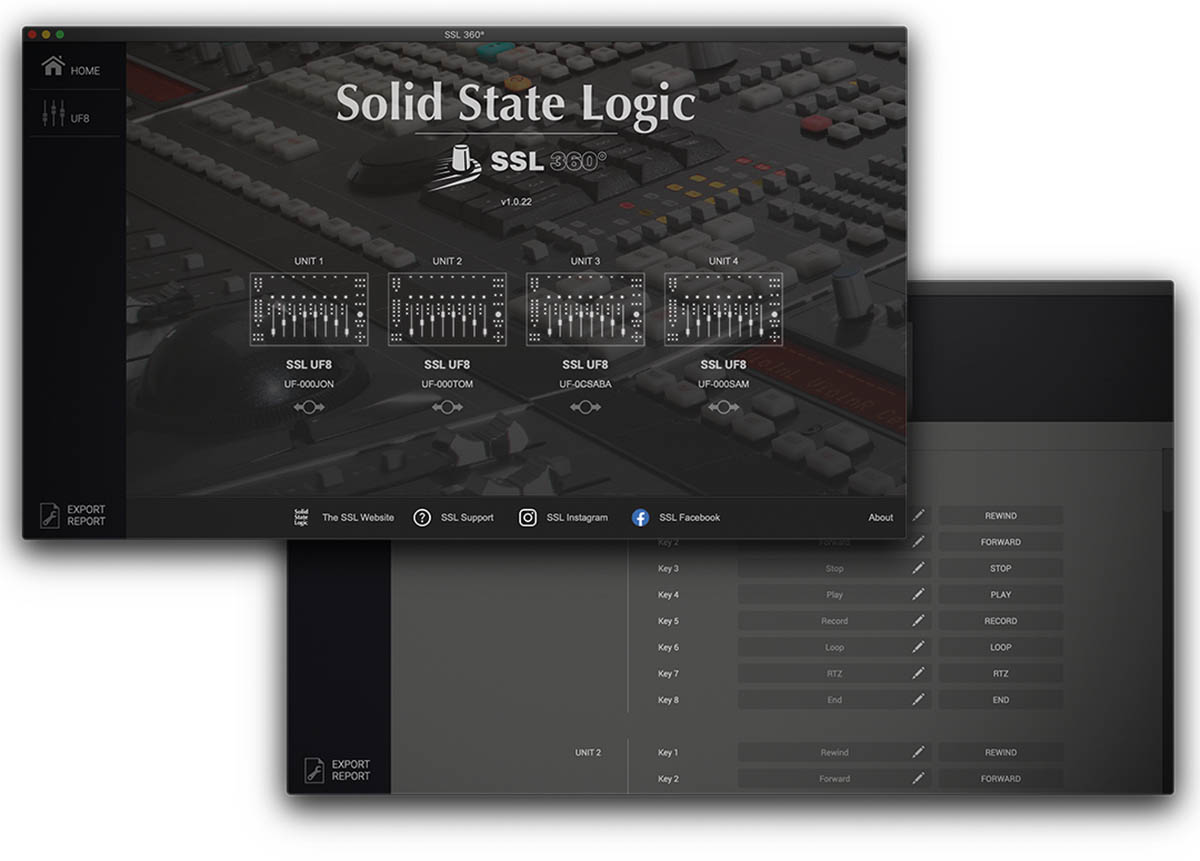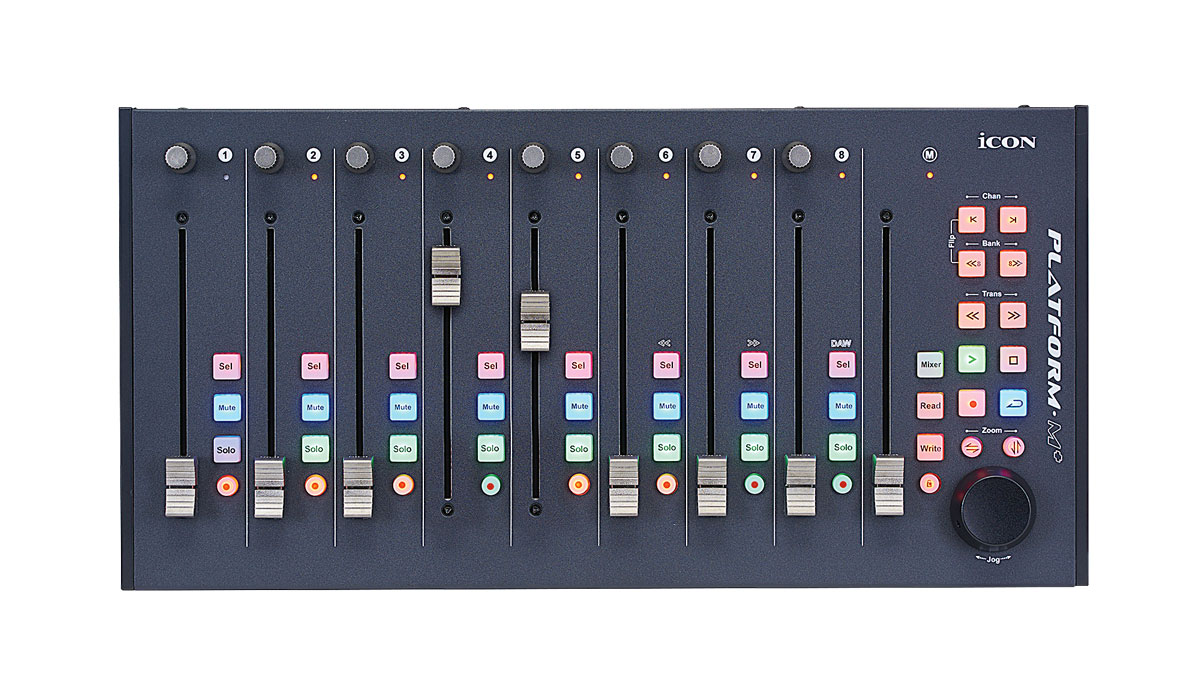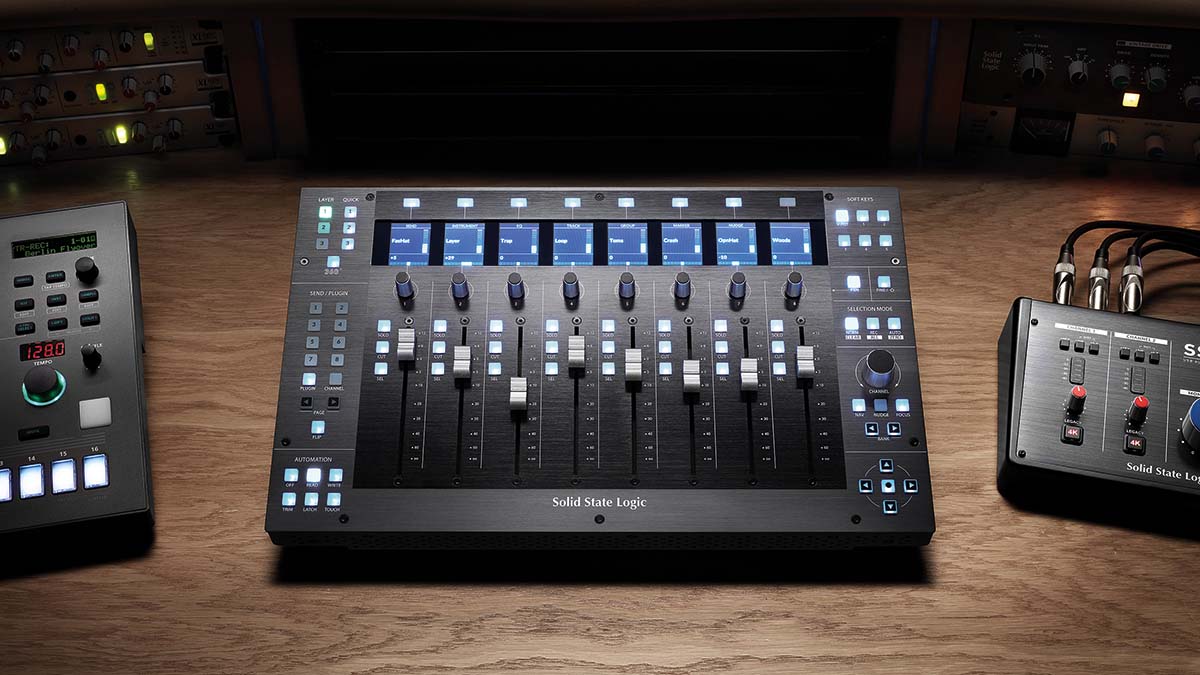MusicRadar Verdict
UF8 is a slick, attractive and highly useable DAW controller that exudes SSL’s legendary quality and attention to detail.
Pros
- +
Super-smooth 100mm motorised faders.
- +
High definition displays on each channel.
- +
Flexible and adaptable Soft Keys system.
- +
Extends the standard HUI protocol.
Cons
- -
No power switch?
- -
Mixed info on displays – confusing.
MusicRadar's got your back
What is it?
Solid State Logic’s large format consoles are found in most high-end mixing and post-production facilities the world over, and they’re considered by many to be about the best that money can buy – although you should note that you’ll need an awful lot of the stuff if you want to buy one for your own studio!
Those of us with more modest budgets tend to settle for recording and mixing in the box, and really, with modern computing power and circuit-modelled instruments and plugins, that’s not such a bad thing sonically.
What it lacks, though, is the hands-on element, and while high-resolution graphic user interfaces are all well and good, compared to working on a large-format console, poking at faders and knobs one-at-a-time with your mouse is a bit like trying to paint your hallway through your letterbox! DAW controllers are a great way to bridge this gap, and with their new UF8, SSL is aiming to bring a slice of its peerless expertise and enviable cachet to this particular area of studio technology.
The UF8 is a mid-sized controller, with a similar footprint to a large laptop. This allows for a comfortable, uncluttered layout, with plenty of space given to each of the unit’s eight channel strips, which include 100mm touch-sensitive motorised faders, a continuous rotary controller, and a high resolution LCD display panel.

At a height of less than 5cm, UF8 is surprisingly svelte too, and this slimness is enhanced by the top surface having no raised or angled sections. If you do want to angle the unit towards you, SSL has included a pair of clever stands that can be attached to the underside of the unit in a number of different configurations so that you can achieve the desired angle. Alternatively, an optional kit allows the UF8 to be secured in a rack, where it occupies 6u of space.
The unit connects to the host computer via USB-2 served from a USB-C socket, and there’s also a secondary USB-A socket intended primarily for daisy-chaining additional UF8s (up to four can be connected to a single computer), but you can use this just like any other USB port on your computer. These USB sockets, along with the DC power inlet and two footswitch jacks, are located on a recessed section of the rear panel.
This keeps the connectors nicely tucked away for neatness, and protects them from being knocked accidentally. Notable by its absence, though, is any form of power switch – there is a tradition that older SSL consoles are never switched off, but we don’t think such an approach is the best for a DAW controller!
Want all the hottest music and gear news, reviews, deals, features and more, direct to your inbox? Sign up here.
Soft Keys
UF8 can communicate via both HUI (Human User Interface) and MCP (Mackie Control Protocol, aka MCU), and so can work with all major DAWs. On the HUI front, SSL has additional features that enhance the core abilities of the protocol, giving Pro Tools users a greater degree of control over channel sends and pans, and plugin parameters, than is available with a standard HUI controller. UF8 communicates with all other DAWs via MCP, but different DAWs implement the protocol in different ways.
Typically, DAW controllers deal with this through the use of printed overlays that you place over the controller’s buttons, thereby giving the buttons accurate labels for the DAW you’re using. SSL has sidestepped this issue entirely, though, thanks largely to the UF8’s “Soft Keys” feature: running along the top of the unit is a set of eight of these so-called Soft Keys, one above each channel.
Each key’s function is displayed at the top of the channel’s LCD screen, which is located just below the Soft Key, and you can quickly switch between six different Soft Key mappings using the bank of buttons at the top-left of the controller. This allows UF8 to be much less cluttered with buttons, and for it to adapt effortlessly to whatever DAW you’re using.
Performance and verdict
UF8 arranges the setup and functionality of all of its faders, knobs and buttons into “Layers”, with three layers available. The idea is that you configure each layer to work with a particular DAW – or indeed to work with the same DAW in three different ways – and you can then instantly switch between layers using the dedicated buttons on the UF8.
Layers are configured using the SSL 360° software, which acts as the main hub for UF8, and deals with converting the hardware’s control signals into protocol- and DAW-specific messages. SSL 360° contains layer presets for all major DAWs, but these are highly customisable, especially with regards to the functionality of the Soft Keys.

Not all of UF8’s button functions are modifiable, of course – there’s plenty of standard fare that’s common across all controllers, such as zooming and navigating, selecting subpages of effect or synth settings, and of course, controlling which DAW channels are being controlled by the UF8.
This you can switch in banks of eight tracks or, by twirling the unit’s data entry dial, you can step forward and back by one track at a time. The names of the currently active tracks are shown in the LCD panels, and often that name will be truncated to fit the available space, which can get a bit tricky if you haven’t allowed for this in your track naming. Nonetheless, the label is large, clear and easy to read.

• Icon Platform M+
A compact and robust DAW controller that works on its own or alongside further Platform fader expanders. Basic but reliable.
• Mackie Control Universal Pro
The Control Universal Pro represents a refinement of an already excellent design, rather than a needless reinvention of the (jog) wheel.
The displays show other useful info too, such as the names and values of the parameters that are under the control of the rotary encoders at any time, the channel signal level, and the channel’s record enabled state. However, when focussing in on just one channel to edit EQ, plugin or instrument settings, for example, the full track name is displayed across as many of the displays as it needs.
This of course means that the names of the other tracks are hidden, but their level meters and record enabled markers remain on display. This combination of single-channel focus and multi-channel readout, all within one screen, is a bit confusing until you become accustomed to it.
The 100mm motorised faders are delectably smooth, with not a jot of resistance or “trembling” from the motors, and the displays are bright, clear and detailed.
At heart, UF8 works like any other DAW controller, allowing you to navigate your session, perform basic editing operations within your DAW, and of course modifying mix, plugin and instrument parameters – it’s a fairly standard recipe these days. UF8 does, however, stand apart from much of the competition: it is more compact than most, yet manages to have a less cluttered control surface, all without sacrificing any functionality.
The 100mm motorised faders are delectably smooth, with not a jot of resistance or “trembling” from the motors, and the displays are bright, clear and detailed. It’s positioned at the upper end of the DAW controller market so won’t suit all pockets, but UF8’s design and build quality render the circa £1k price tag very reasonable. And, let’s face it, it always feels a bit special to approach a bank of faders that carry the Solid State Logic badge.
MusicRadar verdict: UF8 is a slick, attractive and highly useable DAW controller that exudes SSL’s legendary quality and attention to detail.
The web says
"It’s clear that SSL have put a huge amount of experience and thought into its design, and although you can buy moving‑fader control surfaces for much less from the likes of PreSonus and Behringer, no‑one who compares them side‑by‑side will think the UF8 poor value for money. Refined, beautifully made and designed with attention to every last detail, this is the Rolls Royce of MIDI control surfaces."
Sound on Sound
"For the home recordists (especially those who are primarily used to an in-the-box workflow), the UF8 serves as the perfect, scalable entry point into a ‘console’ style workflow, with all the visual and haptic upside that comes with mixing through fader banks and rotary dials (and with the option to chain units together as your mixing needs expand).
For the seasoned pro, the UF8 serves as a delightfully portable fader option for location and post work, absolutely ideal for riding dialogue or for getting in-the-box desk mixes ready on the fly."
Mixdown Mag
Hands-on demos
Sweetwater
Andrew Masters
Studiospares
Sound Technology
Specifications
- TYPE: DAW controller
- KEY FEATURES: High-quality 100mm touch-sensitive faders, hi-res colour display, metal enclosure with brushed anodised top plate, 8 Endless Rotary Encoders, custom workflows with 43 assignable keys per UF8; 5 banks of 8 User Keys plus 3 Quick Keys, Intelligent Multi-Purpose CHANNEL Encoder; Mouse Scroll Emulation. USB connectivity
- CONTACT: Solid State Logic
Computer Music magazine is the world’s best selling publication dedicated solely to making great music with your Mac or PC computer. Each issue it brings its lucky readers the best in cutting-edge tutorials, need-to-know, expert software reviews and even all the tools you actually need to make great music today, courtesy of our legendary CM Plugin Suite.

